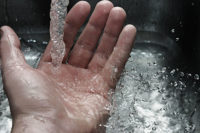Cordray's Column
Understanding the basics of a strong food sanitation program

A strong sanitation program is an essential part of a strong food safety program. There are four basic reasons that we need a good cleaning and sanitation program.
1. Risks from pathogens and spoilage microorganisms
Without an adequate sanitation program there is an increased opportunity for meat products to become contaminated with microorganisms that could endanger public health or cause product spoilage.
2. Risks from pests
Sanitation removes food residue that both attracts and supports the growth of pests. Pests need air, water, food and habitat to grow and multiply.
3. Allergen Control
A small amount of allergen can cause adverse reactions in food allergen-sensitive individuals. Proper sanitation can prevent allergen cross-contamination, which can occur when allergen residues are left on equipment surfaces.
4. Quality concerns
Proper sanitation can prevent quality concerns such as flavor carry-over from similar products.
There are two basic cleaning methods.
1. Wet cleaning
Removes food residue with water and chemicals.
2. Dry cleaning
Removes food residue with mechanical action.
Appropriate steps to follow in wet cleaning
1. Pre-clean
Use a broom, brush, squeegee or other tool to remove food particles and residue from equipment surfaces and the floor.
2. Pre-rinse
Rinse with warm water, 120˚F-140˚F, to remove remaining food particles and residue. This also wets and prepares surfaces for detergent application. Using hot water, 180˚F, may result in some of the residue being “baked” onto surfaces.
3. Washing
Wash equipment surfaces and floor using the appropriate detergent and warm water.
4. Post-rinse
Rinse with warm water to remove detergent and any remaining loose particles. All detergent must be removed, because it may inactivate sanitizers.
5. Inspect
Inspect the cleaned surfaces. If there are any remaining particles or residue, reclean.
6. Sanitize
Sanitize with the appropriate products. Consult with you chemical supplier concerning this.
When washing perform the operation from the top down. Wash the highest points of your equipment first and wash the floor last. This keeps the dirty water and food particles always moving toward the drain. When you sanitize perform that operation from the bottom up. Sanitize the floor first and then the equipment. If you sanitize the floors last there is a possibility that you might splash contaminated water onto clean equipment.
Dry cleaning
Dry cleaning is the removal of food residue from dry processing environments. It reduces the risk of establishing environmental niches for pathogen growth. Tools for dry cleaning include vacuums, scrapers, brushes and sanitizing wipes. Some areas are best dry cleaned. For example; a small room on your production floor where you batch dry nonmeat ingredients.
All official meat plants are required by regulation to have written Pre-operational Standard Operating Procedures (Pre-operational SSOPs) and Operational Standard Operating Procedures (Operational SSOPS) and document on a daily basis that they are performing sanitation procedures as outlined in their documents. Custom meat plants are required to have written Pre-operational SSOPs. Perhaps this might be a good time to review your SSOPs to make sure they follow sanitation basics.
Remember: Food safety is your No. 1 priority.
Reference for the article: FSPCA Preventive Controls for Human Food V1.2.
Looking for a reprint of this article?
From high-res PDFs to custom plaques, order your copy today!








